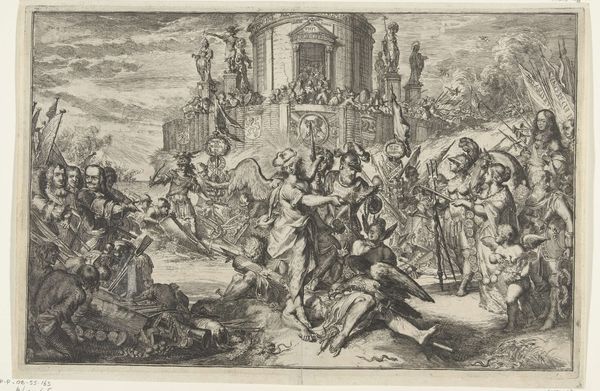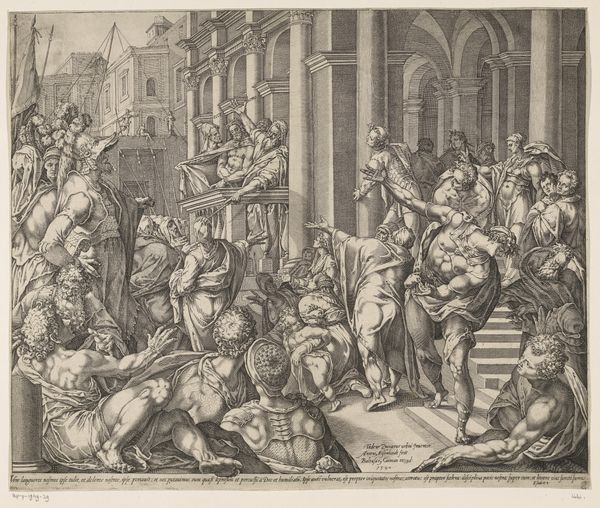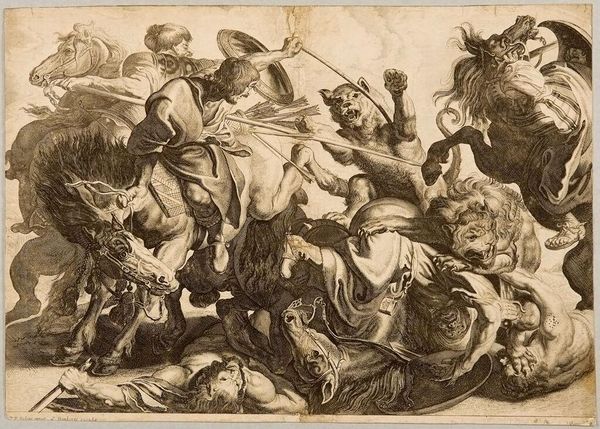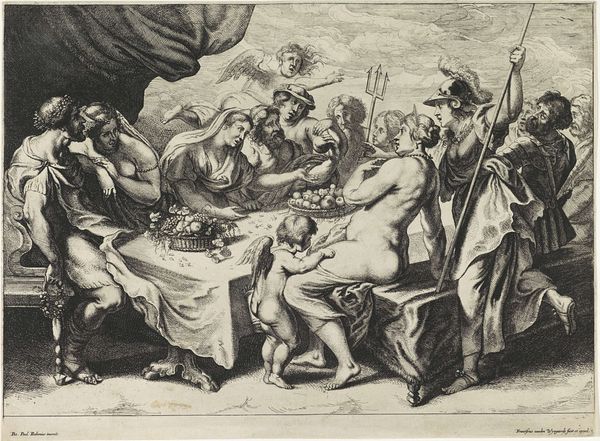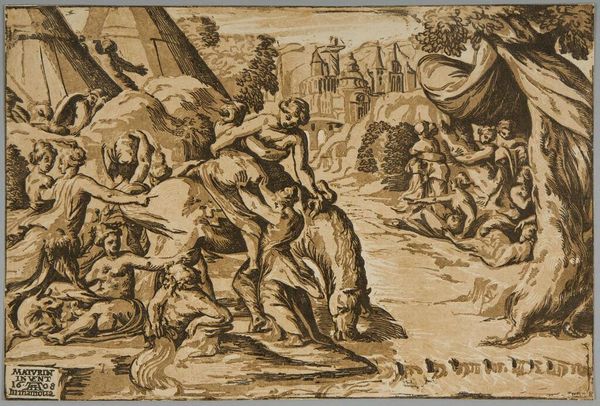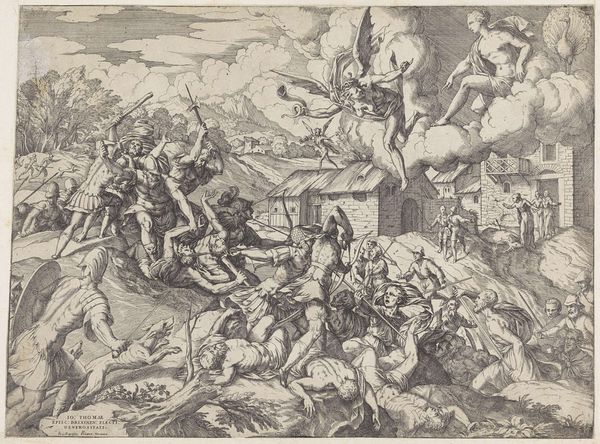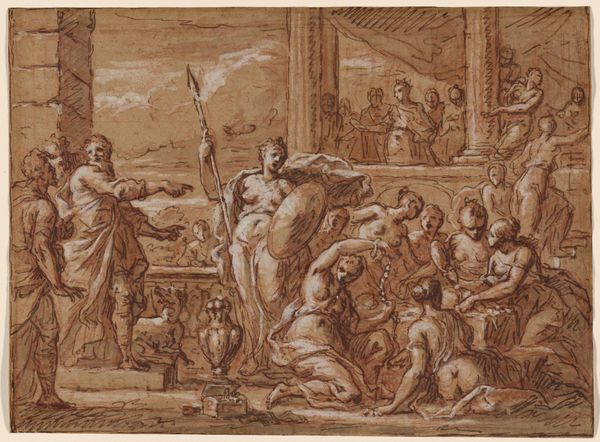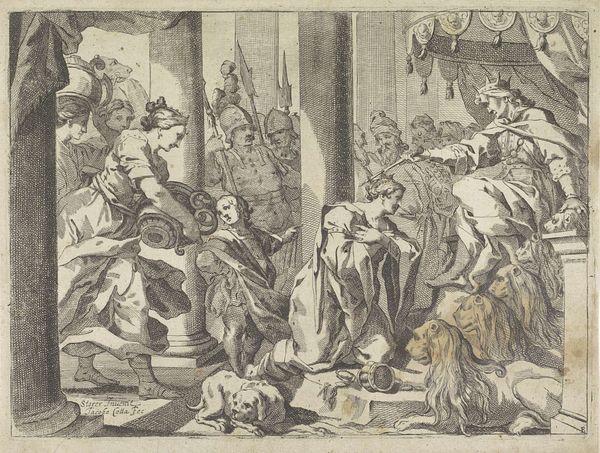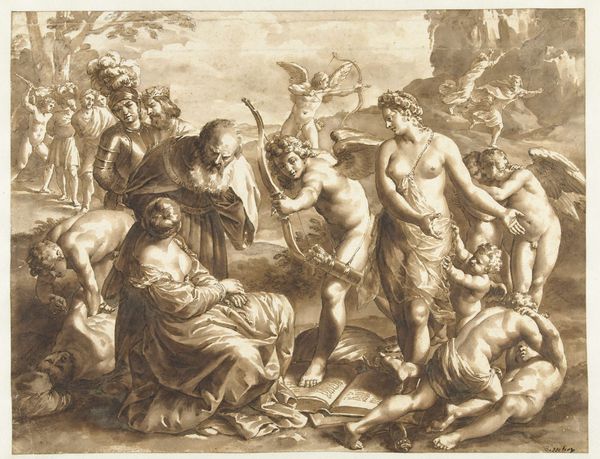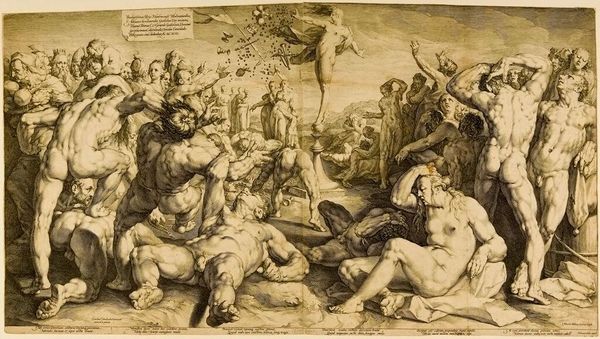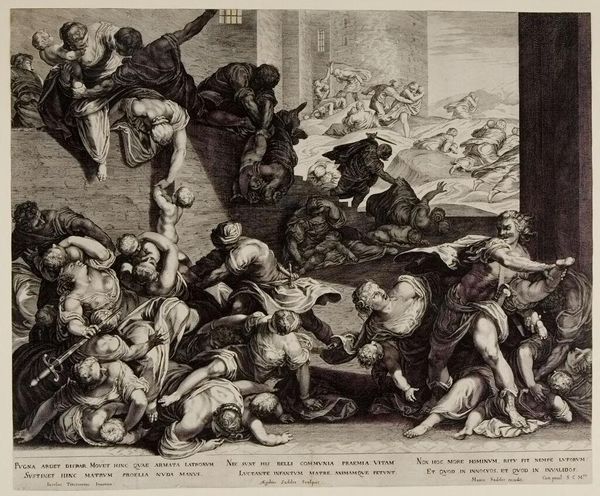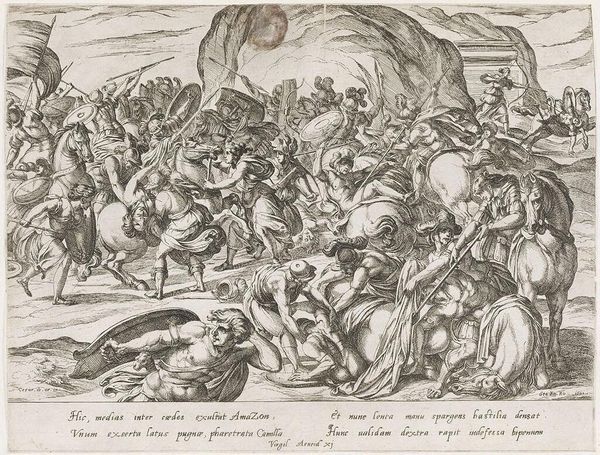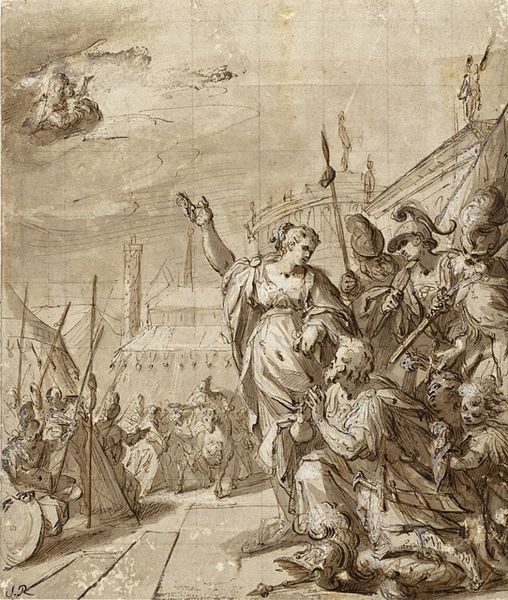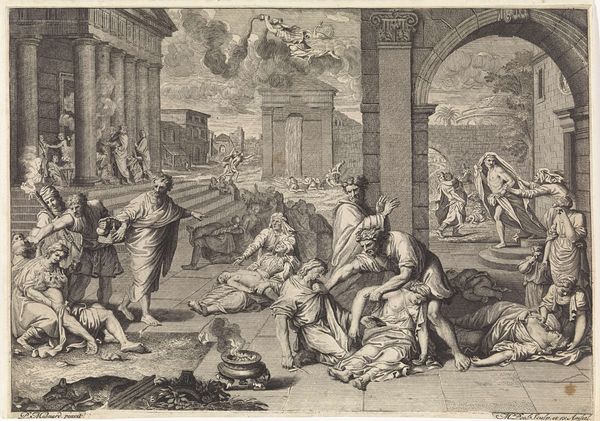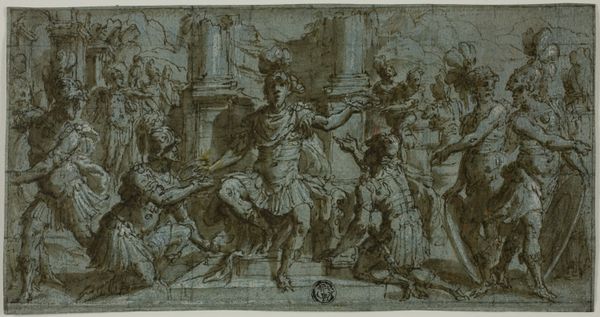
painting, oil-paint
#
narrative-art
#
baroque
#
painting
#
oil-paint
#
figuration
#
oil painting
#
painterly
#
mythology
#
history-painting
Copyright: Public Domain: Artvee
Curator: Good morning. We're looking at Jean-François de Troy’s "The Combat of the Soldiers Born from the Serpent's Teeth," painted around 1742-1743. It's an oil painting, currently unlocated. Editor: It's a rather turbulent composition. The eye struggles to find a still point amid all that violent movement. You immediately feel the tension emanating from the writhing bodies. Curator: Absolutely. De Troy masterfully depicts this scene from classical mythology, specifically the story of Cadmus sowing dragon’s teeth. Notice how the painting conveys a sense of controlled chaos. This theatrical style aligns with the conventions of the Baroque period. This canvas likely represents both the political turbulence of 18th century Europe and the theatricality that ruling power was expected to assume in staging authority. Editor: The rendering of those figures, the fallen soldiers especially, fascinates me. They're not merely bodies but distinct characters, each painstakingly realized. You sense the sheer labour involved in laying down pigment to create those tonal variations and textured surfaces, which amplifies the drama. Were such large-scale mythological paintings typically made in workshops? I am wondering about the division of artistic labor here... Curator: Precisely! Paintings of this scale would have often been executed with the assistance of a workshop. The market demand, the patrons… these affected artistic output and creative process significantly. Editor: Thinking about materials, too. Where would the pigments have been sourced from? What about the canvas? I'm interested in how these very grounded realities affected the image that De Troy then wished to put across. The socio-economic structures that determine where artistic material comes from influence not only production but also image itself. Curator: Those material choices would reflect cost, availability and artist preferences, which were influenced by prevailing taste and the art market itself. Troy, as a prominent painter and director of the French Academy in Rome, occupies a central position. His work, and especially pieces like this, illustrate the close ties between the arts and the institutions of power during this period. Editor: I now view the image somewhat differently having had a chance to look again! Curator: Indeed! Art gives us so much to see.
Comments
No comments
Be the first to comment and join the conversation on the ultimate creative platform.
